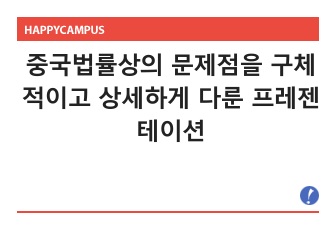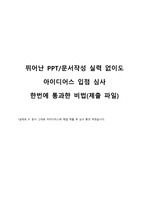DO FOREIGN CREATIVE INDUSTRY PRODUCTS CONTRIBUTE TO THE PROMOTION OF PRODUCTS IMPORTED FROM THE SAME COUNTRY? : CASE OF JAPANESE AND KOREAN PRODUCTS IN EMERGING ECONOMIES
* 본 문서는 배포용으로 복사 및 편집이 불가합니다.
서지정보
ㆍ발행기관 : 글로벌지식마케팅경영학회(GFMC)
ㆍ수록지정보 : Global Marketing Conference
ㆍ저자명 : Wataru Uehara, Yuichi Washida, Takeshi Matsui
ㆍ저자명 : Wataru Uehara, Yuichi Washida, Takeshi Matsui
영어 초록
The purpose of this study is to consider what influence creative content industry imports in emerging countries have on the formation of images of the country of origin. Japanese animation and games, as well as Korean pop music and movies are highly welcomed in many countries (Douglas 2002), especially in the emerging countries of Asia. Seeing such global successes, the Japanese government has adopted the "Cool Japan" policies promoting Japanese creative industry products, ranging from comics, fashion, music, animation and games to characters. Creative industry products, such as Hollywood movies, are also popular in many countries (Craig et al. 2005). Globalization of creative industry products has been a popular topic for many scholars in different disciplines, including cultural anthropology (e.g., Allison, 2006), sociology (e.g., Dowd and Janssen 2011), cultural studies (e.g., Lash and Lury, 2007), and cultural policy (e.g., Crane, Kawashima, and Kawasaki, 2002). However, although global marketing has been an important theme in the discipline for years (e.g., Zou and Cavusgil 2002), the globalization of creative industries has not received enough attention from marketing scholars with a few exceptions (e.g., Matsui, 2009). The reason marketing scholars have not had much interest in creative industries is that the synergy with other manufacturing or service industries has been unknown. Due to the same reason, “Cool Japan” and “Korean Boom” are not directly designed to promote emerging countries' manufactured goods/services. Has there been empirical improvement in the brand image of Japanese or Korean automobiles and digital devices in countries where Japanese animation or Korean pop music is pervasive? We used data from Hakuhodo Global Habit 2013 to verify this hypothesis. It is a series of consumer surveys conducted by Hakuhodo Inc., the second largest advertising agency in Japan. It is one of the largest global consumer survey databases conducted yearly in Japan, and includes consumer surveys from 36 major cities worldwide. In each city, approximately 800 participants are randomly selected and asked about 900 questions regarding their product purchases and preferences, product ownership, daily activity, media usage, hobbies, value systems, and demographic profile. Respondents are in the upper or middle-class segments of each country. Due to its large sample size and stable survey procedures, we consider Hakuhodo Global Habit 2013 reliable enough for academic statistical analyses. From the database, the consumers' preference ratio for four types of creative content including animation, manga, music, television dramas, and movies of foreign origins were used in ascertaining the degree to which creative industry products were received in thirteen emerging countries’ cities: Jakarta, Singapore, Seoul, Taipei, Delhi/Mumbai, Hong Kong, Kuala Lumpur, Bangkok, Yangon, Ho-chi-minh city, Manila, Beijing/Shanghai/Guangzhou, and Moscow. The originating countries are Japan and Korea. Respondents were chosen using stratified sampling by gender and age. They were asked to choose countries from which they preferred content (multiple answers allowed). They were also asked about Japan and Korea, and whether or not there was an image of either as a production area for any of 14 types of manufactured goods and services (consumer electronics, digital devices, automobiles, fashion, luxury goods, furniture, animation, tourism, sports, movies, music, food products, medical products, and cosmetics) (multiple responses). For both Japan and Korea, we analysed partial correlations between the degree of reception of four types of creative content in 13 cities and the image of the production area for 14 types of products. Also, we analysed simple correlations among the degrees to which four types of creative content were received. The following three findings were revealed from the results. The overall trends were the same for both Japan and Korea. Finding 1: Reception of animation and manga does not contribute to an improvement in the image of other manufactured products or services. A positive correlation with the reception of animation and manga was found only for the image of the production area for animation, and the correlation was, for the most part, negative concerning the image of the area in the production of the other 13 types of manufactured goods or services. Finding 2: Reception of movies, music, and television dramas contributes to improvement in the image of other manufactured products or services. The other three types of creative content correlate positively with the image of the production area for a variety of manufactured goods and services. In particular, movies had a positive correlation with images for automobiles, furniture, medical products and other types in both Japan and Korea. With regard to television dramas and music, content produced in Japan had a higher positive correlation with the images of other manufactured goods and services than that produced in Korea. Finding 3: Reception of the four types of creative content correlate highly with each other. Consumers receiving Japanese animation were significantly more prone to also receive other Japanese creative content. The same trend was also seen in the results for Korea. The following conclusions were obtained from these findings. The export of Korean movies, television dramas and pop music, which is creative content of the so-called “Korean boom,” is inferred to contribute to branding of Korean digital devices and automobiles. However, we inferred that simply exporting Japanese animation, does not contribute to the branding of Japanese manufactured goods or services. This divergence is inferred to be in the essence of the difference in the current marketing efficiency between the “Cool Japan” strategy and “Korean boom.” On the other hand, we expect that exporting Japanese animation has the influence of increasing reception of Japanese movies, television dramas and pop music, and, moreover, the receipt of Japanese movies, television dramas, and pop music can be expected to contribute to the branding of Japanese manufactured goods and services. In other words, we concluded that exports of Japanese animation indirectly have a favourable effect on marketing activities for Japanese manufactured goods and services. In practice, because of copyright issues, Japanese movies, television dramas and pop music are not able to be as actively exported as Korean movies, television dramas and pop music are. Nevertheless, the influence of Japanese movies, television dramas, and pop music per se is considered to be the same as for those produced in Korea. We inferred that to be the case because the reception of Japanese animation and manga (including pirated versions) underpins such influence. This study used a large amount of quantitative data, and empirically verified the significance in marketing “Cool Japan” and the “Korean boom.” The initial hypothesis was supportive of movies, television dramas and music, but negative for animation. However, it was suggested that although the “Korean Boom” and “Cool Japan” appear to be similar strategies, they have major structural differences.참고 자료
없음"Global Marketing Conference"의 다른 논문
 THE ROLES OF GREEN PACKAGING IN UGLY FOOD PURCHASE INTE..22페이지
THE ROLES OF GREEN PACKAGING IN UGLY FOOD PURCHASE INTE..22페이지 THE IMPACT OF INDUCED AWE ON ETHICAL TOURIST BEHAVIORS5페이지
THE IMPACT OF INDUCED AWE ON ETHICAL TOURIST BEHAVIORS5페이지 A BIBLIOMETRIC ANALYSIS OF SPIRITUAL TOURISM RESEARCH15페이지
A BIBLIOMETRIC ANALYSIS OF SPIRITUAL TOURISM RESEARCH15페이지 SOCIAL NETWORK ANALYSIS AND RESPONSE TIME TESTING: CONS..11페이지
SOCIAL NETWORK ANALYSIS AND RESPONSE TIME TESTING: CONS..11페이지 THE EFFECTS OF PARA-SOCIAL INTERACTION ON ONLINE CELEBR..3페이지
THE EFFECTS OF PARA-SOCIAL INTERACTION ON ONLINE CELEBR..3페이지 THE INFLUENCE OF OPINION LEADERS ON DAILY DEALS USER’S ..3페이지
THE INFLUENCE OF OPINION LEADERS ON DAILY DEALS USER’S ..3페이지 HOW IMMERSIVE RETAILING AFFECTS CONSUMERS’ URGE TO BUY:..6페이지
HOW IMMERSIVE RETAILING AFFECTS CONSUMERS’ URGE TO BUY:..6페이지 KEY TO SUPERSTARDOM IN A GLOBALISED MARKET: THE ROLE OF..6페이지
KEY TO SUPERSTARDOM IN A GLOBALISED MARKET: THE ROLE OF..6페이지 A POST-PANDEMIC LOOK AT TOURISTS’ PERCEIVED COOLNESS OF..4페이지
A POST-PANDEMIC LOOK AT TOURISTS’ PERCEIVED COOLNESS OF..4페이지 EXTRACTING OFFLINE RETAIL SHOPPING PATTERNS: OLLABORATI..5페이지
EXTRACTING OFFLINE RETAIL SHOPPING PATTERNS: OLLABORATI..5페이지

























